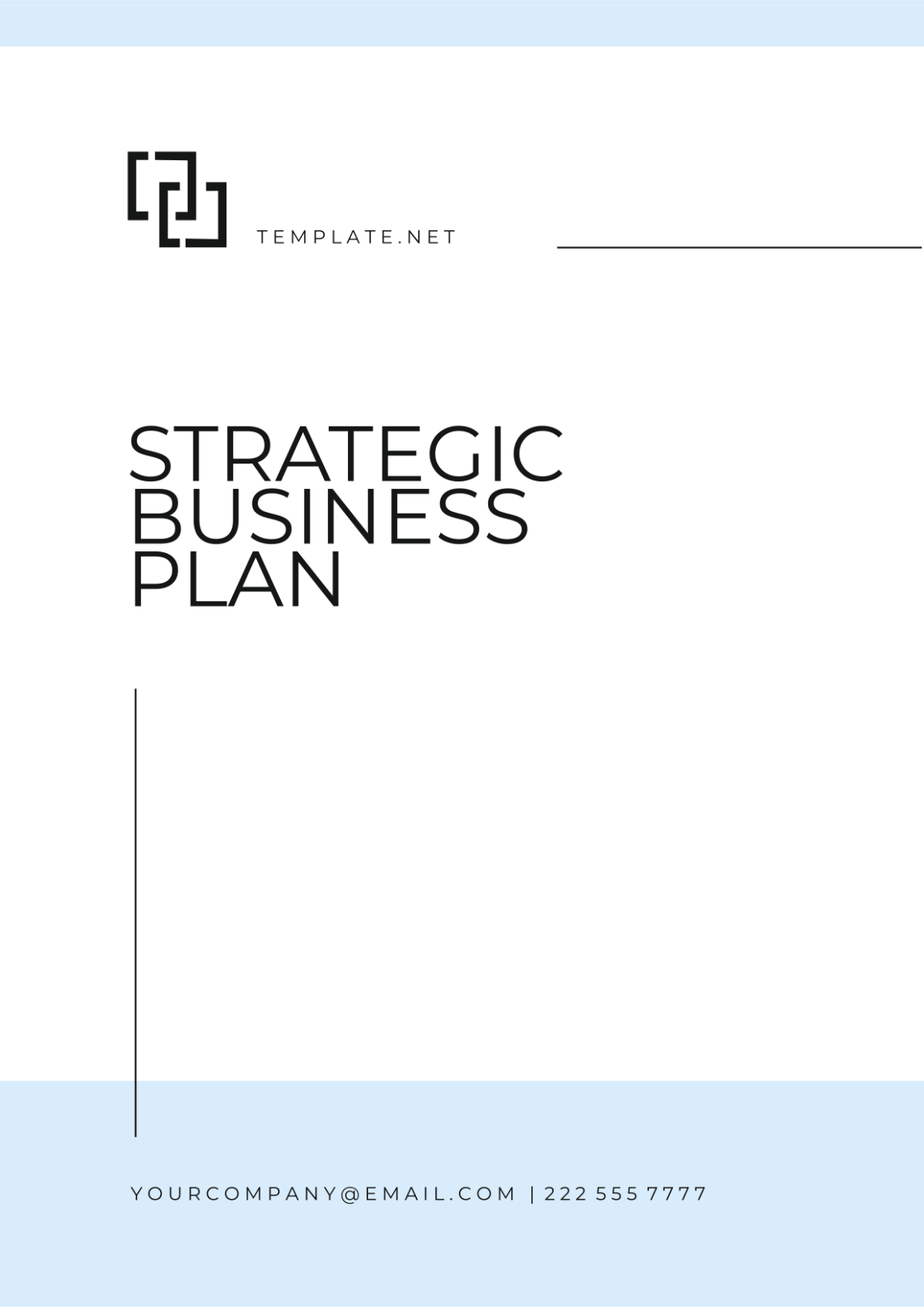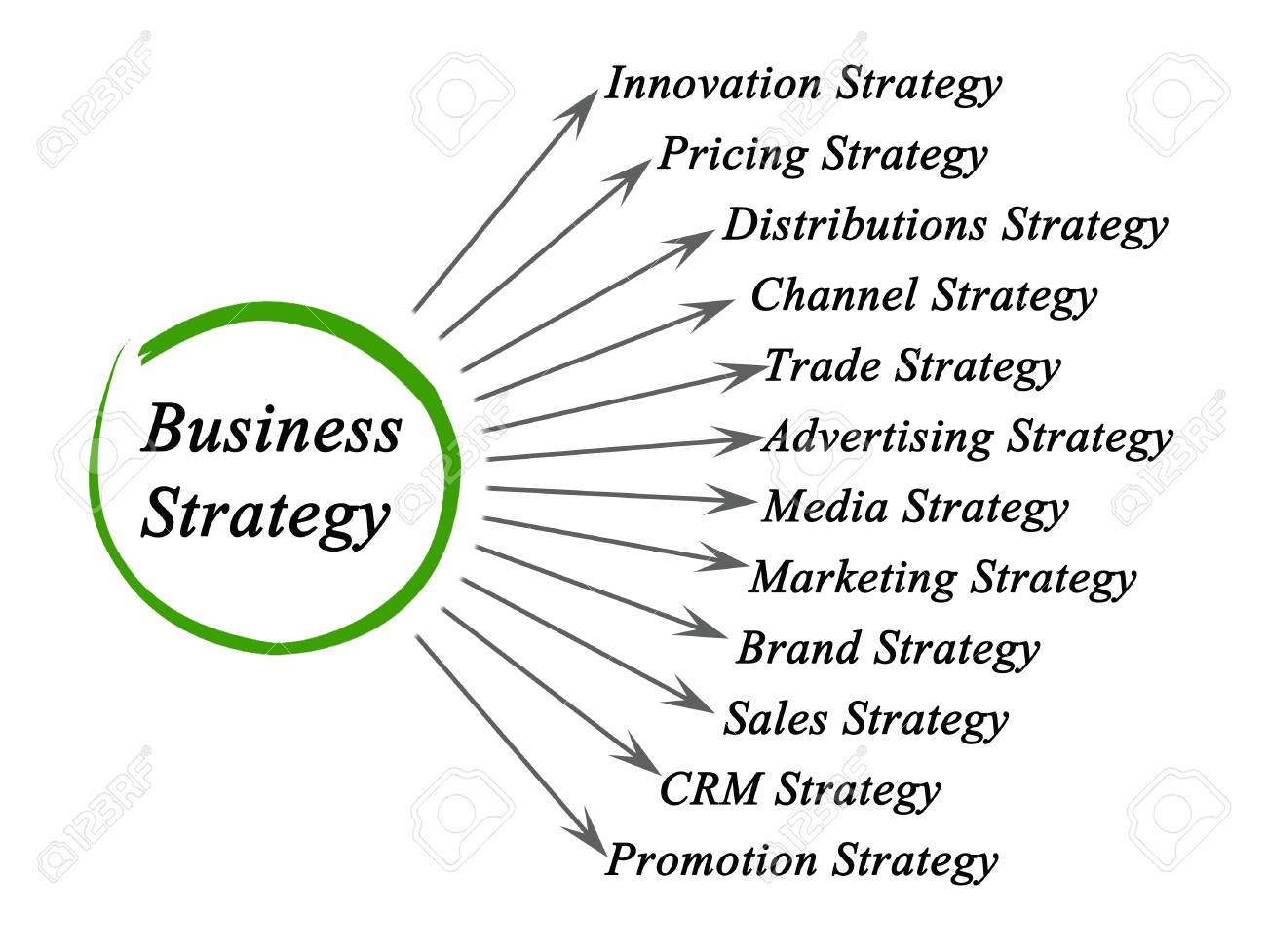Free Strategic Business Plan

I. Executive Summary
Company Name: [YOUR COMPANY NAME]
Address: [YOUR COMPANY ADDRESS]
Social Media: [YOUR COMPANY SOCIAL MEDIA]
[YOUR COMPANY NAME] envisions becoming a leading provider of sustainable technology solutions, focusing on renewable energy and eco-friendly products. Over the next five years, our strategic objectives include expanding our product line, entering new markets, and fostering strategic partnerships to drive sustainable growth and contribute positively to environmental conservation efforts worldwide.
II. Company Overview
[YOUR COMPANY NAME], founded in [Year], pioneers advanced solar energy solutions for homes, businesses, and industries. Our cutting-edge products maximize energy efficiency, reduce carbon footprints, and offer tailored energy audits for seamless transitions to cleaner power, ensuring substantial cost savings. With ongoing research and development, we lead innovation to meet evolving customer needs and drive sustainable practices. Join us in shaping a greener future with our renewable energy solutions.
III. Market Analysis
Industry Overview: The renewable energy sector, fueled by environmental concerns and government incentives, has seen rapid growth. Solar energy stands out for its scalability and cost-effectiveness.
Market Size: The global solar energy market exceeds $100 billion, growing at a robust rate of around 20% annually due to sustainability initiatives and reduced reliance on fossil fuels.
Customer Segments: Our focus spans residential, commercial, and industrial sectors, each seeking reliable solar solutions for cost savings, sustainability, and regulatory compliance.
Market Needs: Customers require high-quality, efficient solar products and comprehensive energy services to optimize usage, reduce waste, and transition smoothly to renewable energy sources.
IV. Competitive Analysis
A. Major Competitors
SolarTech Solutions: Offers a wide range of solar panels and inverters for residential and commercial use.
GreenPower Innovations: Specializes in solar energy systems for large-scale industrial applications.
SunEnergy Corp: Provides integrated solar solutions including energy storage systems and consultation services.
B. Competitor Products/Services
SolarTech Solutions: Residential and commercial solar panels, inverters, and energy monitoring systems.
GreenPower Innovations: Industrial-grade solar panels, inverters, and customized energy solutions for factories and warehouses.
SunEnergy Corp: Solar panels, energy storage systems, and comprehensive energy audits for businesses and municipalities.
C. Competitive Advantages
[Your Company Name] differentiates itself through advanced solar panel technology, offering higher energy conversion rates and durability.
Our comprehensive energy audits and consultation services provide added value, helping clients optimize energy usage and maximize cost savings.
Strong partnerships with leading suppliers ensure access to top-quality components and competitive pricing, enhancing our market position.
D. Barriers to Entry
High initial capital investment and R&D costs act as significant barriers for new entrants.
Established brand reputation and customer trust are crucial, requiring time and effort to build.
Regulatory compliance and industry certifications are essential, creating hurdles for newcomers without prior experience.
V. Marketing Strategy

A. Branding
Brand Identity: Establish a strong brand identity centered around sustainability, innovation, and reliability in renewable energy solutions.
Brand Messaging: Communicate our commitment to environmental stewardship, cutting-edge technology, and customer satisfaction across all marketing channels.
Visual Identity: Develop a cohesive and appealing visual identity through logos, colors, and design elements that resonate with eco-conscious consumers.
B. Market Positioning
Target Segments: Tailor marketing messages to resonate with residential, commercial, and industrial customers, highlighting specific benefits and cost savings relevant to each segment.
Competitive Differentiation: Highlight unique selling points such as advanced solar panel technology, comprehensive energy audits, and superior customer service to differentiate from competitors.
Value Proposition: Emphasize the long-term benefits of investing in our solar energy solutions, including reduced energy costs, environmental impact, and energy independence.
C. Pricing Strategy
Value-Based Pricing: Align pricing with the value delivered, considering factors such as energy savings, product quality, and added services like energy audits.
Tiered Pricing: Offer tiered pricing packages based on customer needs and scale of installations, providing flexibility and affordability for different market segments.
Promotional Pricing: Implement occasional promotional pricing or bundle discounts to incentivize new customers and drive sales during peak seasons or events.
D. Sales Strategy
Consultative Selling: Train sales teams to adopt a consultative approach, understanding customer needs, educating on benefits, and offering tailored solutions.
Partnerships: Collaborate with builders, contractors, and energy consultants to expand reach and access new customer segments through referrals and joint promotions.
After-Sales Service: Focus on excellent after-sales service, including maintenance contracts, warranties, and customer support, to enhance customer satisfaction and loyalty.
E. Distribution Channels
Direct Sales: Utilize direct sales teams for B2B and large-scale residential installations, offering personalized consultations and project management services.
Online Platforms: Establish a user-friendly e-commerce platform for smaller residential installations, providing product information, pricing, and online purchase options.
Retail Partnerships: Partner with home improvement retailers or solar energy distributors to showcase products and reach customers in high-traffic retail locations.
VI. Operations Plan
Location & Facilities: Our headquarters are strategically located in [City, Country], featuring modern office spaces for administration and a state-of-the-art manufacturing facility for solar panel assembly and testing.
Technology: We leverage advanced solar panel technologies, including monocrystalline and polycrystalline cells, with efficiency rates exceeding industry standards. Our energy management systems incorporate IoT technology for remote monitoring and optimization.
Equipment and Tools: Our production facility is equipped with automated solar panel assembly lines, quality control testing equipment, and specialized tools for installation and maintenance services.
Inventory: We maintain a comprehensive inventory of solar panels, inverters, energy storage systems, and related components to meet customer demands promptly and efficiently.
Suppliers and Vendors: We have established partnerships with reputable suppliers for solar cells, inverters, mounting hardware, and other critical components, ensuring consistent quality and timely deliveries.
Logistics and Distribution: Our logistics network encompasses efficient warehousing, transportation, and distribution channels to serve local and international markets. We collaborate with logistics partners to streamline shipping, reduce lead times, and optimize supply chain operations.
VII. Organizational Structure
A. Management Team
CEO: Sets vision and long-term goals
COO: Ensures smooth operations and resource allocation
CTO: Oversees product development and innovation
CFO: Manages financial planning and analysis
CMO: Drives marketing strategies and customer engagement
B. Staffing Needs
We require skilled professionals in solar engineering, sales and marketing, operations management, finance, and customer support. Additionally, technical teams for R&D, installation, and maintenance are essential for our operations.
C. External Support
We engage legal advisors for compliance and contracts, IT consultants for digital infrastructure maintenance, and HR consultants for talent acquisition and employee relations. Collaborating with industry experts and associations also strengthens our network and industry knowledge.
VIII. Financial Projections (Year 1)
Income Statement: $7 200 000
Cash Flow Statement: $9 200 000
Balance Sheet (End of Year 1): $7 300 000
These figures represent the financial performance and position of the company at the end of the first year of operations. The positive cash flow indicates healthy liquidity, while the balance sheet reflects the value of assets held by the company after accounting for liabilities. Adjustments and analysis based on these figures can guide future financial planning and decision-making.
- 100% Customizable, free editor
- Access 1 Million+ Templates, photo’s & graphics
- Download or share as a template
- Click and replace photos, graphics, text, backgrounds
- Resize, crop, AI write & more
- Access advanced editor
Create a winning strategy with ease using our Strategic Business Plan Template from Template.net. This highly adaptable tool empowers you to map out your vision with precision and clarity. Seamlessly customize and edit every aspect to align perfectly with your goals and objectives. Leverage our Ai Editor Tool for effortless modifications and updates
You may also like
- One Page Business Plan
- Coffee Shop Business Plan
- Restaurant Business Plan
- Food Business Plan
- Real Estate Business Plan
- Executive Summary Business Plan
- Cover Page Business Plan
- Nonprofit Business Plan
- Daycare Business Plan
- Construction Business Plan
- Startup Business Plan
- Medical Business Plan
- Bakery Business Plan
- Service Plan
- Hotel Business Plan
- Catering Business Plan
- School Business Plan
- Healthcare Business Plan
- Transportation Plan
- Sports Plan
- Car Wash Business Plan
- Salon Business Plan
- Clothing Business Plan
- Farming Business Plan
- Boutique Plan





























